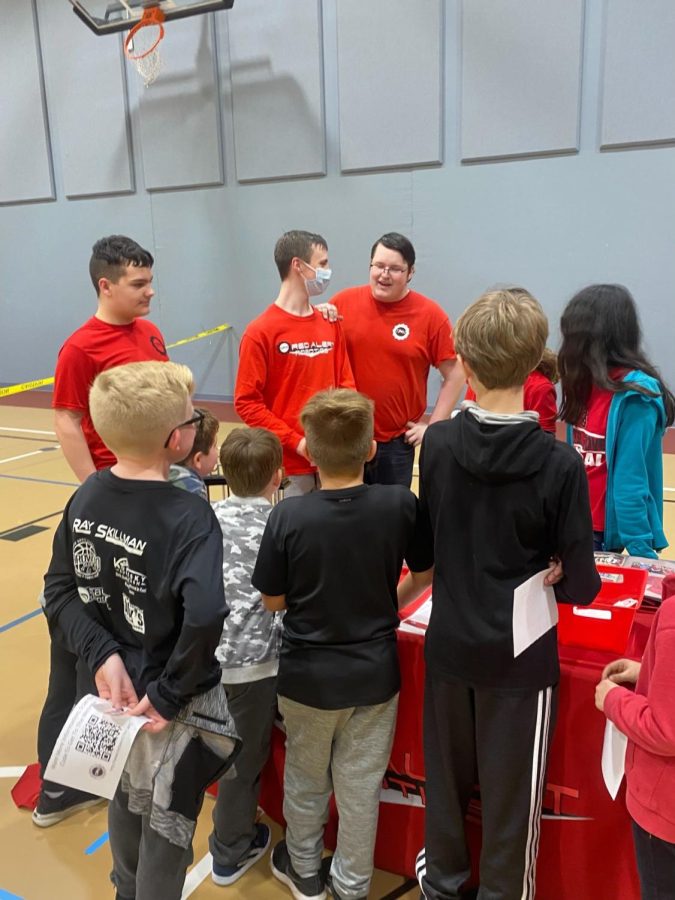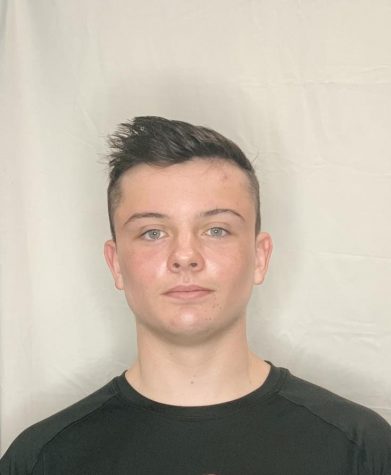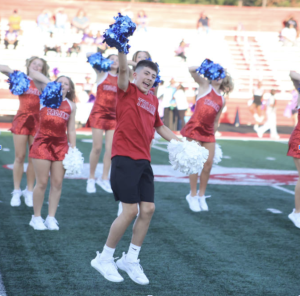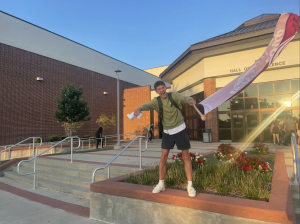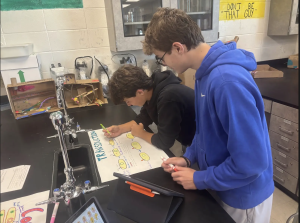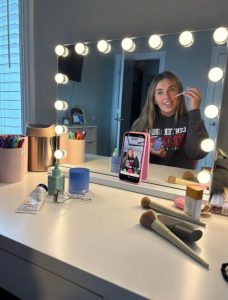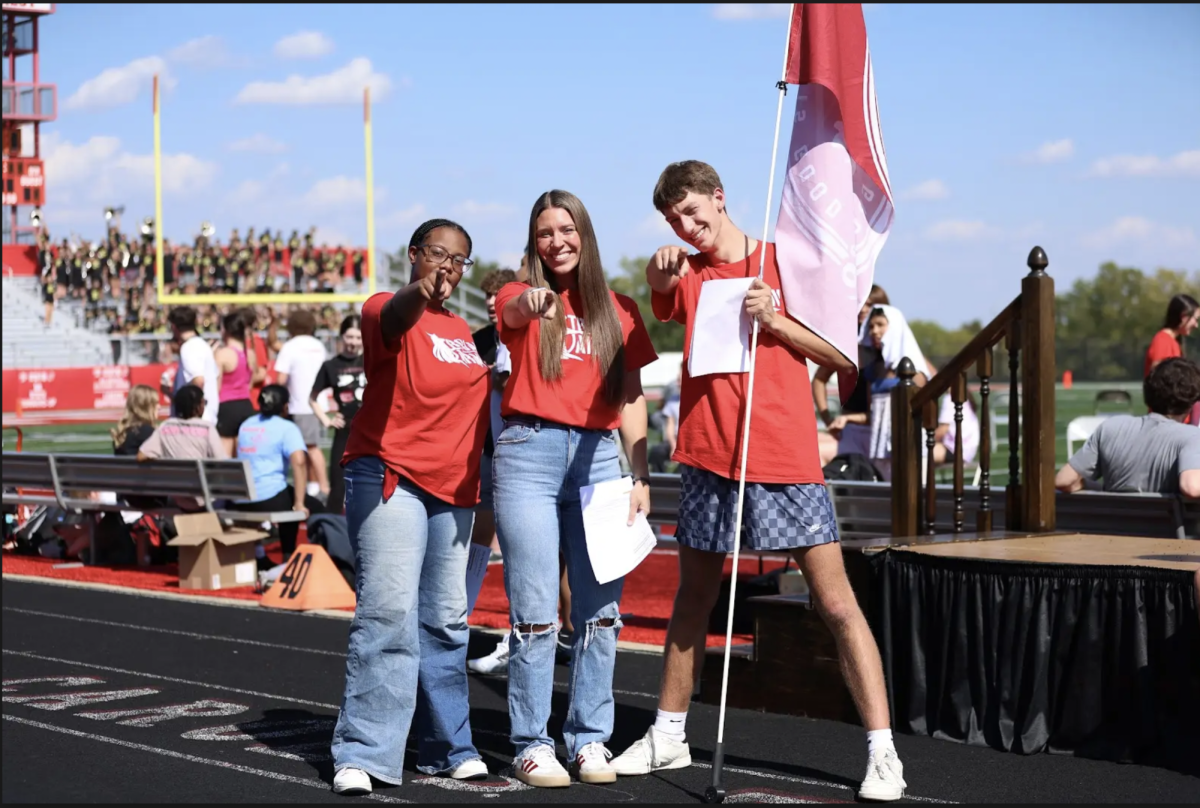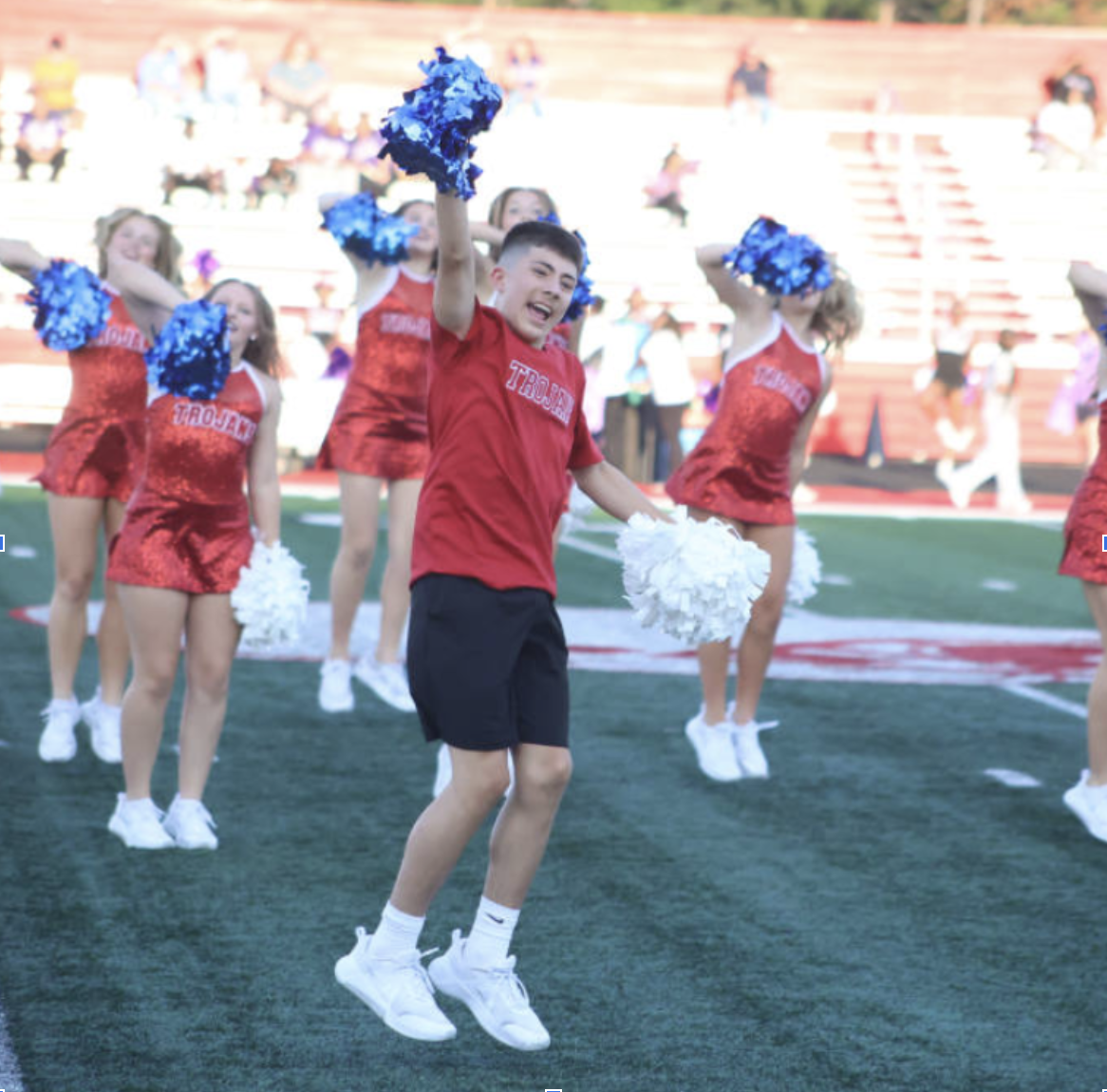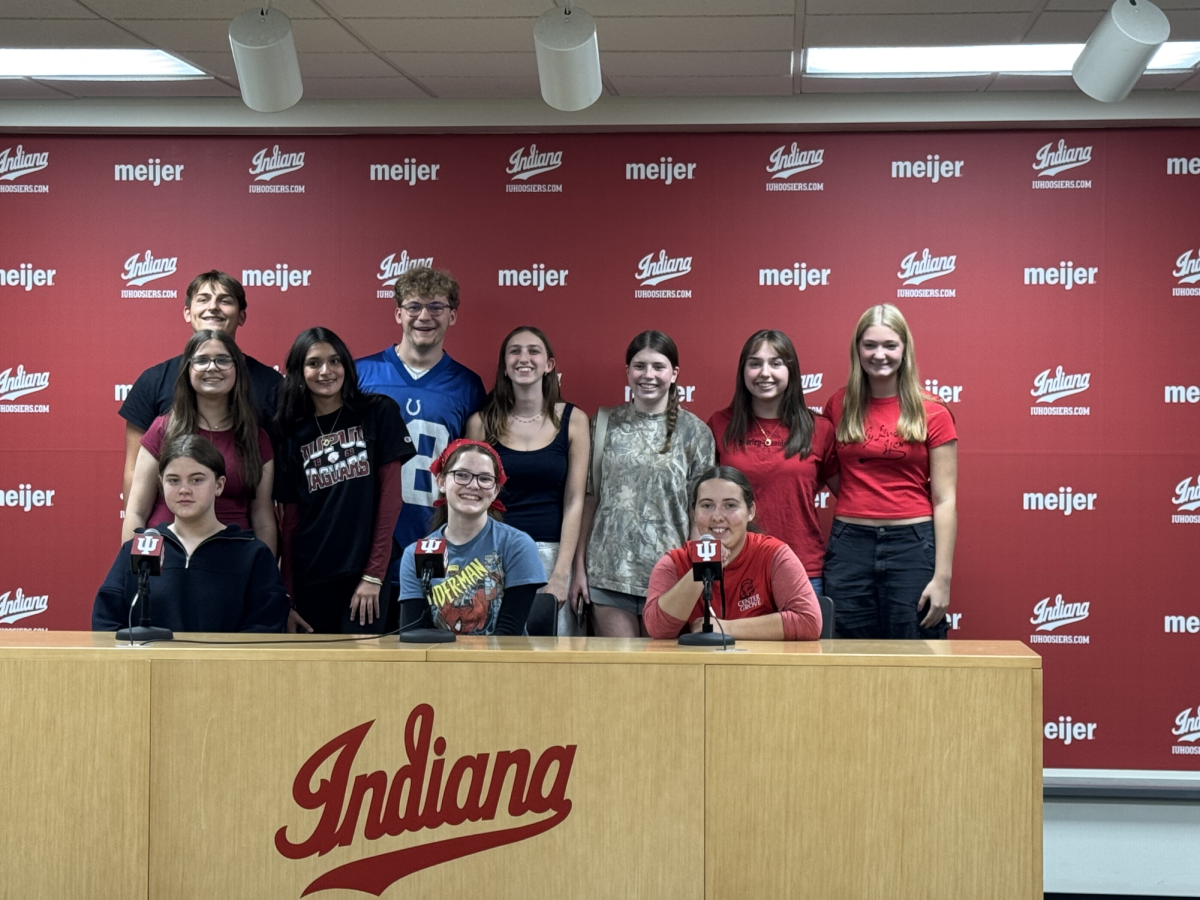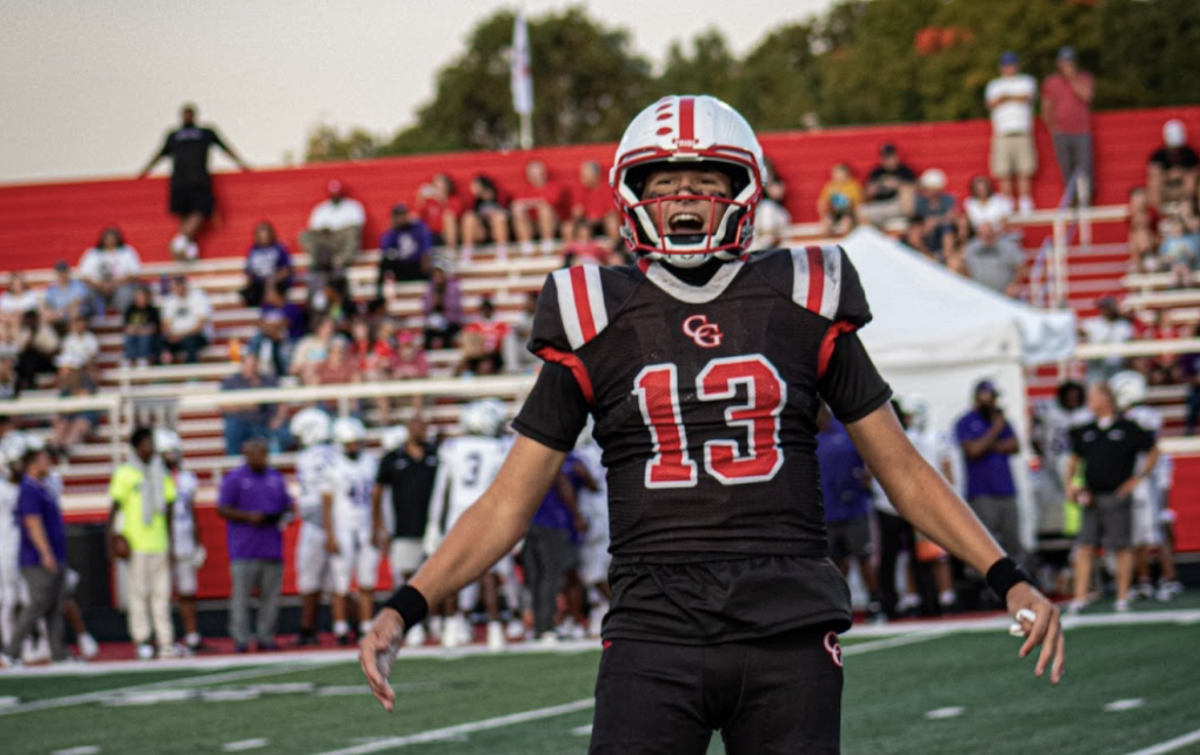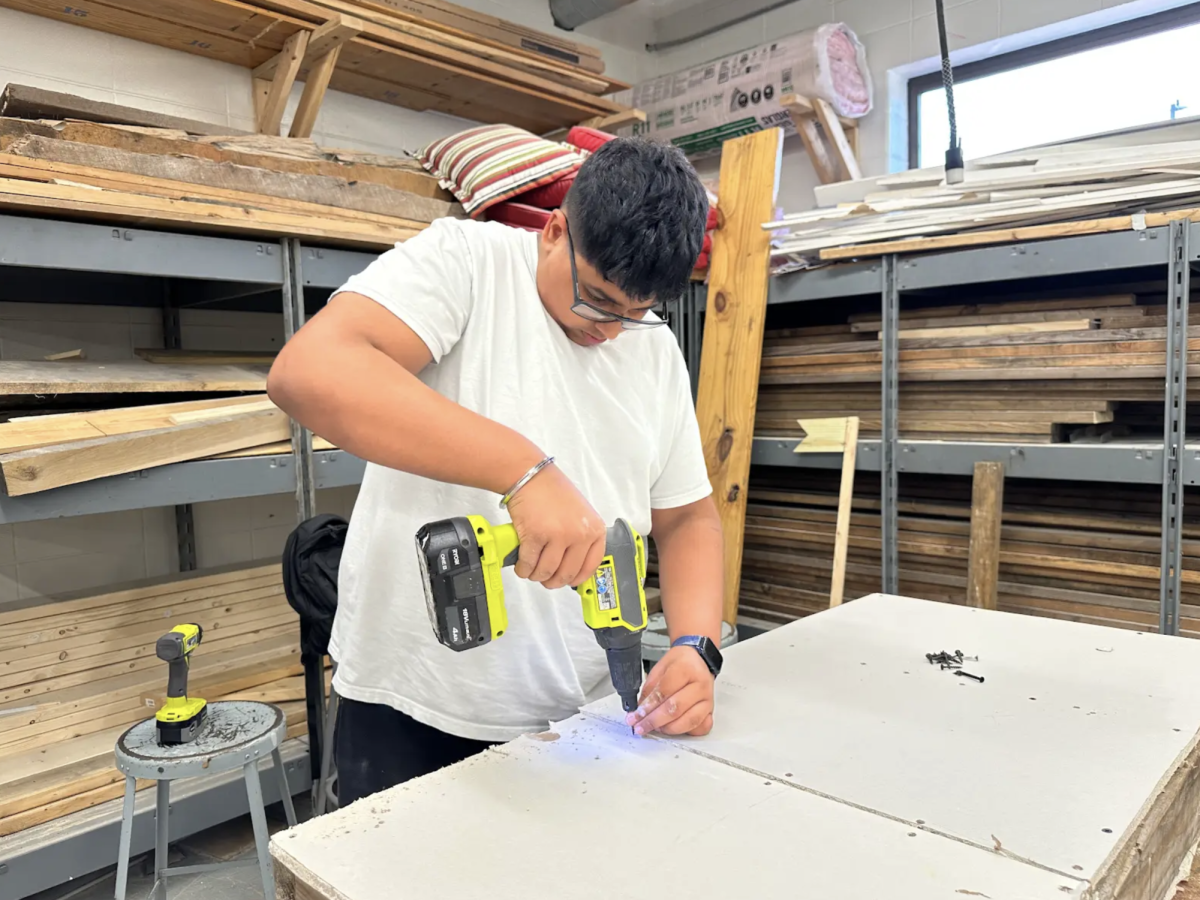Running Robotics
February 18, 2022
The lights shine bright as he opens his eyes, sweat dripping down his brow. The autonomous period has come to its end. The robot has executed his task flawlessly. The team is excited, but they know it is far from over.
The executive captain of the Robotics team, Eli Leser, watches over the robotics team as the competition moves into the user-controlled Tele-Op period.
In his first season in the position, Leser knows there are a lot of hurdles to overcome. The position of executive captain comes with a lot of extra responsibilities, including problem solving those hurdles.
“I have to figure out what’s going on, where additional help is needed and where help is not needed,” Leser said. “This is the most challenging and important skill I’ve learned.”
The executive captain does much more than any other leader. The team is divided into different subgroups: one is for people dedicated specifically to creating parts and one is for people who work on the user inputs of the robots. For the executive captain, the responsibilities span the entire team. One day Leser will be helping one subgroup, and the next practice he’ll be working with another group.
“For example, today I spent all day with the manufacturing team,” Leser said after a long Saturday morning practice in late January. “I never would’ve done that. I learned how to use the mill today. And by the end of the day I was slinging parts.”
However, Leser does not see all of these added responsibilities as a burden, but rather as a new, unique opportunity that he would not have been able to take advantage of any other year.
“In the past, especially last year, I was the electronics lead,” Leser said. “I had my group of people that I was leading every day. I ended up almost walling myself off from the rest of the team because I had my projects I needed to focus on; however, being the executive captain has helped me make connections with the rest of the team. There are just a lot of new opportunities.”
Among these added responsibilities are some unique to the 2022 season, which boasts an increase in first year members.
“We have 50 people on our team roster right now, 26 of those are freshmen, and something like two-thirds are rookies,” Leser said. “That in and of itself can be challenging.”
The rookies are not a negative to Leser, but rather another added opportunity for himself as a captain of the team.
“The amount of freshmen can be really good for the team in future years,” Leser said. “They aren’t a hindrance, but teaching them the skills and getting them to the point where they can perform tasks well without interrupting the normal flow of a build season can be difficult.”
While teaching newcomers may be considered a challenge, the number of them has also been a positive for the team.
“There are also very good elements to it too,” Leser said. “There are a lot of people who have been doing a great job at picking up the slack even if they weren’t 100% sure how to do it to begin with.”
The positive effect of the rookies has helped the team overcome another hurdle: absences.
“We’ve been behind on the design for the robot’s ball shooter, and we’ve not had anyone to designate that task especially because one of our engineering leads has been unable to attend for a couple of weeks,” Leser said. “So we assigned a group of rookies to head that up. They’ve got good ideas, they have a good starting point, and we can easily explain to them what is good about their ideas and what needs more thought.”
Overall, what Leser enjoys the most is the new perspective that his new leadership position has given him.
“I like being able to have the big picture view of the team,” Leser said. “That’s something I’ve always struggled with. I was always struggling to grasp the big picture. Being the captain, especially the executive captain, has forced me to see the big picture, especially since I don’t have a specific subteam.”
After being nominated, acing the interview and being offered the position of executive captain, Leser couldn’t have been more satisfied with the results. The reason he wanted to be in this position circles back around to his desire to have a more broad perspective.
“I nominated myself, did the interview and then they offered me the position and I chose to take it,” Leser said. “I’ve always enjoyed being in leadership positions. As much as I am very focused on the details, I enjoy having the opportunity to expand and see the bigger picture of the team.”
He has infinite respect for his teammates and their ability, but in terms of position specific skills, Leser sees himself as the perfect fit for the executive captain position. Seeing the big picture has allowed Leser to appreciate all the different subteams and their members
“We have some very skilled people, and I mean very skilled people,” Leser said. “That being said, I felt that I was the most open and willing to shift my perspective to the team as a whole. I’ve looked at the past captains and realized how influential they were to the success of the team. I was like, ‘if it’s not me, I don’t know who it’s going to be.’”
After Leser applied, he faced an interview where he talked about unity and communication, which have been priorities for him as captain.
“One thing that was a big selling point in my interview was opening communication throughout the team as a whole,” Leser said. “I wanted to make it like we didn’t have sub teams, more like one big team.”
In a way, Leser planned to give robotics what it gave to him.
“Robotics has drastically increased my confidence and my ability to be outgoing,” Leser said. “It is definitely made up of mostly introverted people. Especially being in leadership positions, it has forced me to go outside my comfort zone and be more extroverted. Through robotics, I have been able to learn so much by watching other leaders, and now by being one. I have developed leadership and social qualities much better than I would’ve without it.”


